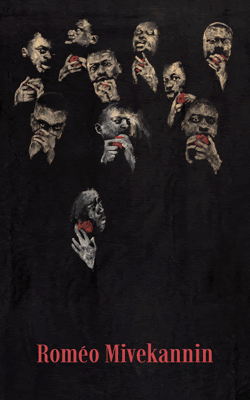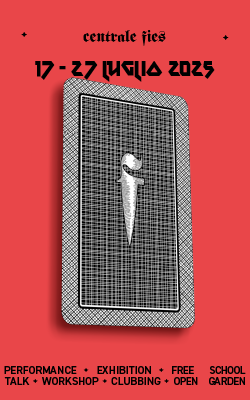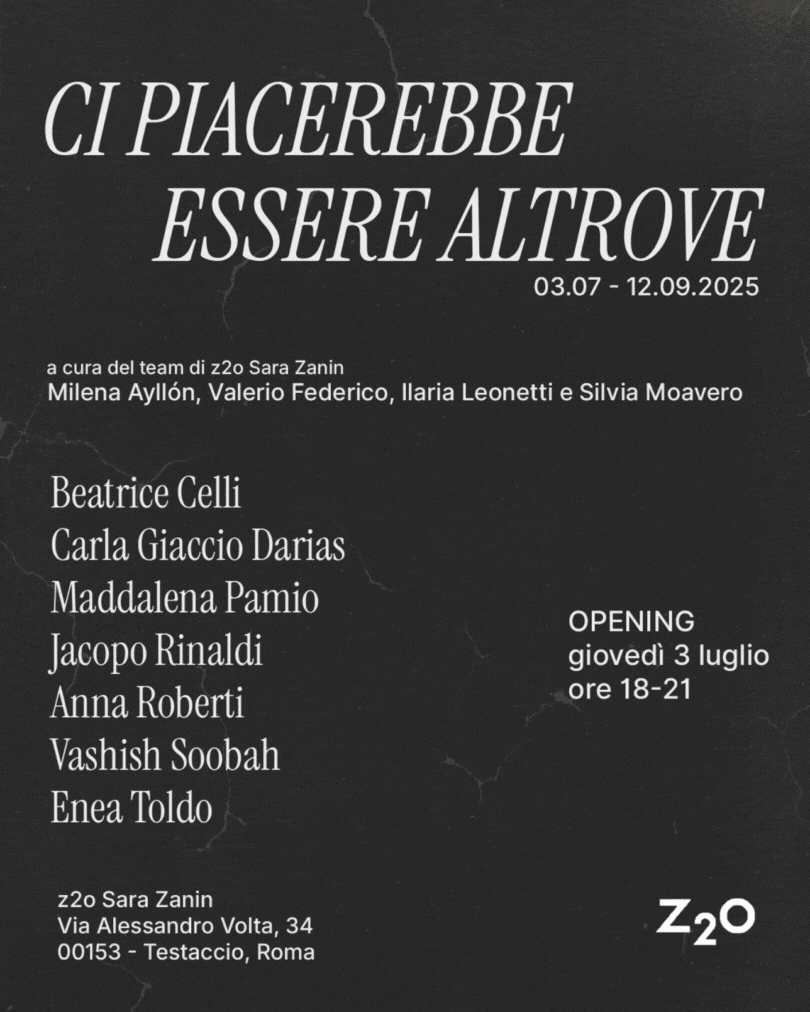
Segue versione in italiano —
Text by Francesco Urbano Ragazzi
Γεωργὸς καὶ παῖδες αὐτοῦ.
Ἀνὴρ γεωργός μέλλων τελευτᾶν καὶ βουλόμενος τοὺς αὐτοῦ παῖδας ἐμπείρους εἶναι τῆς γεωργίας μετακαλεσάμενος αὐτοὺς ἔφη· τέκνια, ἐν μιᾷ τῶν ἀμπέλων μου θησαυρὸς ἀπόκειται. Οἱ δὲ μετὰ τὴν αὐτοῦ τελευτὴν ὕννας τε καὶ δικέλλας λαβόντες πᾶσαν αὐτῶν τὴν γεωργίαν ὤρυξαν, καὶ τὸν μὲν θησαυρὸν οὐχ εὗρον, ἡ δὲ ἄμπελος πολυπλασίως τὴν φορὰν αὐτοὺς ἀπεδίδου.
Ὁ λόγος δηλοῖ, ὅτι ὁ κάματος θησαυρός ἐστι τοῖς ἀνθρώποις.
The Farmer and His Sons
A farmer who was about to die wanted his sons to be knowledgeable about the farm, so he summoned them and said, ‘My children, there is a treasure buried in one of my vineyards.’ After he died, his sons took plows and mattocks and dug up the entire farm. They did not find any treasure, but the vineyard paid them back with a greatly increased harvest.
The tale shows that man’s greatest treasure consists in work.
(Aesop, Fables, I-42)
April 6, Athens Conservatoire
The Athens Conservatoire became the first meeting point for the people of Documenta. Everybody arrived there after the press conference at Megaron, and its rooms got quickly packed. At a certain point the organization even had to evacuate one of those rooms, where the large Beatriz Gonzalez’ curtain, loaned by Tate Modern, was facing Pélagie Gbaguidi’s school desks (The Missing Link. Dicolonisation Education by Mrs Smiling Stone, 2017).
Crowding, the people then moved to Nevin Aladağ’s Music Room, where several pieces of furniture had been transformed into musical instruments that the artist would have been playing during an inaugural performance. We couldn’t breath though. So we started searching for fresh air taking up the stairs and, after a few flights, we found it on the top floor of the building, inside the actual conservatory. All along two large and parallel corridors, the piano and percussion classes were echoing the dance and choir rehearsals, composing, second by second, a delicate symphony. These corridors were to us like a giant wind instrument: our music hall.

April 7, evening, Stella Municipal Cinema
“I Had Nowhere to Go” is a film by Douglas Gordon for text and voice by Jonas Mekas. It’s the story of an inevitable journey, a painful departure and a marvelous discovery. It’s the story which in a few years takes Jonas Mekas away from his village in Lithuania, to the Nazi labor camps in Kassel, and finally to New York. A story that Mekas lived and wrote in the mid-40s, way before the poet had bought his first camera; a diary that Douglas Gordon brought to the big screen with the eyes and the ears of someone who can only imagine what war is.
We knew that story and we had already watched that movie twice in ideal conditions, inside two perfectly equipped and climatized theaters. But we wanted to watch it again there, at the Stella Municipal Cinema in Kypseli, in the evening cold, with all those plants getting inside the moving images, the moon and the lights from the houses, the people smoking, the fights at the entrance and all the other background noises. We loved that movie infinitely more.

April 8, morning, Athens School of Fine Arts
There was something powerful between Campos-Pons’ glass vases, palm barks and railings. A vital breath. We had been immediately attracted to it. But that breath seemed to be a little constricted by the low height of the ceiling and those crates which divide the installation into two. We were lively talking about that when she snuck up on us, María Magdalena Campos-Pons. She looked at us, she smiled at us and gently asked: «May I ask you what you think about this work?»

April 9, early afternoon, Monument Madra Blokou Kokkinias
We had come to another Athens. Nobody was there anymore, neither the locals nor the Documenta crowd. We were in Nikaia, the ancient Kokkinia, a neighborhood on the Western outskirts of Athens, near Piraeus, which had been literally built on a refugee camp at the beginning of last century: here the reason of the straight roads, all parallel or perpendicular one another.
We arrived there too early and everything was closed. We had to wait three hours at least for the performance to begin, and the end of the performance for the video to be ready. We were in the wrong place at the wrong moment, when a choir started singing from the basement of a building: we timidly approached and they waved us on. In the room there were the choristers – a group of elderly men from the neighborhood – Mary Zigoury and her gallerist Ida Pisani, together with a bunch of young helpers. They were getting ready for the performance. We were close to the old carpet factory of Kokkinia, where the Nazis killed 74 members of the Greek resistance in 1944; where Maria Karavela (1938-2012) hold a performance to commemorate that massacre in 1979; where a museum stands today and Mary has been working with the community for quite some time. Where we did not know we were.

April 9, afternoon, Yiannis Tsarouchis Foundation, Marousi
We put all our expectations on this grand finale. We wanted it to be a little theatrical, a little classical, a little carnal: à la Jean Cocteau. The word ‘foundation’ made us prefigure magnificent scenarios. But when we got there, in the Northern outskirts of Athens, we faced a modest two-floor cubic house, albeit anticipated by a pretty thin columned pronaos.
In the garden of the house there was a small family gathering with biscuits and soft drinks: these unexpected refreshments refreshed us too. And while we were sipping the coffee that had been kindly offered, we discovered that the people who had welcomed us in the garden were the Tsarouchis family in person, an extended family composed of nephews, friends, connoisseurs and other unidentified relatives. Even the mediators sent by Documenta as part of a chorus – who were recognizable for black 14 printed t-shirt and who usually seemed a bit lost – were already part of the family.
All together, they took us to visit what once was the home-studio of the artist. A series of sketches for theatrical scenery were exhibited on the first floor: the most astonishing were the ones of the Trojan Women, drawn to be performed in a parking lot. So we asked our guides to show us anything else, to show us everything. We were ready to visit every corner of the foundation with them. Once we had taken the second flight of stairs however, we understood our tour was over. Inside the upper room there were a chessboard floor, scratched walls and a dehumidifier. Work in progress. We discovered that the foundation had been condemned before Documenta 14 started the process of reopening, which is still not over: «This is just a beginning» a member of the family told us.

—
Testi di Francesco Urbano Ragazzi
FABLES FROM DOCUMENTA 14 — Athens, 6-9 April 2017
Γεωργὸς καὶ παῖδες αὐτοῦ.
Ἀνὴρ γεωργός μέλλων τελευτᾶν καὶ βουλόμενος τοὺς αὐτοῦ παῖδας ἐμπείρους εἶναι τῆς γεωργίας μετακαλεσάμενος αὐτοὺς ἔφη· τέκνια, ἐν μιᾷ τῶν ἀμπέλων μου θησαυρὸς ἀπόκειται. Οἱ δὲ μετὰ τὴν αὐτοῦ τελευτὴν ὕννας τε καὶ δικέλλας λαβόντες πᾶσαν αὐτῶν τὴν γεωργίαν ὤρυξαν, καὶ τὸν μὲν θησαυρὸν οὐχ εὗρον, ἡ δὲ ἄμπελος πολυπλασίως τὴν φορὰν αὐτοὺς ἀπεδίδου.
Ὁ λόγος δηλοῖ, ὅτι ὁ κάματος θησαυρός ἐστι τοῖς ἀνθρώποις.
Il contadino e i suoi figli
Sul punto di morte, un contadino che voleva trasmettere ai figli la conoscenza dell’agricoltura, li riunì attorno a sé e disse: «Ragazzi miei, ho sepolto un tesoro in una delle mie vigne». Allora, dopo che l’uomo morì, i suoi figli presero aratri e zappe e rivoltarono tutti i loro terreni. Non trovarono alcun tesoro, ma la vigna li ripagò con un raccolto più abbondante del solito.
Questa storiella insegna che è il lavoro il più grande tesoro posseduto dagli uomini.
(Esopo, Favole, I-42)
6 Aprile, Athens Conservatoire —
Il conservatorio era diventato il primo punto di incontro per la gente di Documenta. Tutti erano approdati lì dopo la conferenza stampa al Megaron, e le sue sale si erano presto gremite. Ad un certo punto l’organizzazione aveva persino dovuto evacuarne una, di sala: proprio accanto alla grande tenda di Beatriz González in prestito dalla Tate e ai banchi di Pélagie Gbaguidi (The Missing Link. Dicolonisation Education by Mrs Smiling Stone, 2017).
Accalcandosi, si erano allora tutti trasferiti nella music room di Nevin Aladağ, dove oggetti domestici erano stati trasformati in strumenti musicali che l’artista avrebbe suonato in una performance inaugurale. Mancava l’aria però. L’abbiamo cercata prendendo le scale, e dopo poche rampe l’abbiamo trovata: all’ultimo piano, nel conservatorio vero e proprio. In due corridoi paralleli, lunghi e larghi, facevano eco le classi di pianoforte, di percussioni, le prove di danza, del coro, in una lieve sinfonia che si componeva istante per istante. Quel corridoio era come un grande strumento a fiato, la nostra music hall.
7 Aprile, sera, Cinema Stella
“I Had Nowhere to Go” è un film di Douglas Gordon per testo e voce di Jonas Mekas. È il racconto di un viaggio inevitabile, un allontanamento doloroso e una meravigliosa scoperta. È la storia che in pochi anni porta Jonas Mekas dal suo villaggio in Lituania, ai campi di lavoro nazisti di Kassel, fino a New York. Una storia vissuta e scritta da Mekas nella seconda metà degli anni ’40, prima che il poeta approdasse alla macchina da presa; un diario riportato sul grande schermo da Douglas Gordon, con gli occhi e le orecchie di chi la guerra l’ha solo immaginata.
Conoscevamo la storia e avevamo visto il film già due volte e in condizioni ideali: in due sale cinematografiche perfettamente attrezzate e climatizzate. Ma volevamo rivederlo e risentirlo lì, al cinema Stella di Kypseli, al freddo della sera, con le piante che entravano nelle immagini, la luna e le luci delle case, la gente che fumava, le liti all’ingresso e tutti gli altri rumori di fondo. Lo abbiamo amato infinitamente di più.
8 Aprile, mattina, Athens School of Fine Arts
Tra i vasi di vetro, le cortecce di palma e le ringhiere di Campos-Pons c’era qualcosa di potente. Un soffio vitale. Ne eravamo stati subito attratti. E quel soffio ci era però sembrato anche un po’ compresso dall’altezza ridotta del piano rialzato e da quelle casse di legno che dividevano l’installazione. Discutevamo animatamente proprio di questo, quando alla nostre spalle è arrivata lei, María Magdalena Campos-Pons. Ci ha guardato, sorriso, e con gentilezza ci ha chiesto: «Posso chiedervi cosa pensate di quest’opera?»
9 Aprile, primo pomeriggio. Monument Madra Blokou Kokkinias
Eravamo arrivati in un’altra Atene. Non c’era più nessuno. Né la gente del posto, né la gente di Documenta. Eravamo a Nikaia, l’antica Kokkinia, un quartiere della periferia ovest di Atene, nelle vicinanze di Piraeus, letteralmente costruito su un campo profughi all’inizio del secolo scorso: ecco perché le strade dritte, parallele o perpendicolari le une alle altre.
Eravamo arrivati troppo presto ed era tutto chiuso. Perché la performance iniziasse bisognava aspettare almeno tre ore e per il video bisognava aspettare che la performance fosse finita. Eravamo nel posto sbagliato al momento sbagliato. Finché da un seminterrato abbiamo sentito il canto di un coro: ci siamo timidamente affacciati e tutti ci hanno fatto segno di entrare. C’erano i coristi, un gruppo di anziani signori del quartiere, Mary Zygouri e la sua gallerista Ida Pisani, insieme ad un alcuni giovani aiutanti. Tutti insieme si stavano preparando. Eravamo nell’antica fabbrica di tappeti di Kokkinia. Proprio dove nel 1944 le truppe naziste uccisero 74 membri della resistenza greca. Dove Maria Karavela (1938–2012) dedicò una performance alla memoria di quel massacro nel 1979. Dove oggi sorge un museo della resistenza. Dove Mary da tempo sta lavorando con la comunità. Dove non sapevamo affatto di essere.
9 Aprile, pomeriggio, Yiannis Tsarouchis Foundation, Marousi
Avevamo riposto tutte le nostre aspettative in questo finale. Volevamo che fosse un po’ teatrale, un po’ classico, un po’ carnale: à la Jean Cocteau. La parola Foundation ci aveva fatto prefigurare scenari magnificenti. Ma arrivati lì, nella periferia nord di Atene, ci siamo trovati di fronte ad una modesta villetta cubica a due piani, seppur anticipata da un grazioso pronao dotato di sottilissime colonne.
Nel giardino della casa c’era una sorta di piccolo ricevimento di famiglia con bevande e biscotti: un inaspettato rinfresco che rinfrancò anche noi. E mentre sorseggiavamo il caffé gentilmente offerto, scoprivamo che quella che ci accoglieva in giardino era proprio la famiglia di Tsarouchis: una famiglia allargata di nipoti, amici, conoscitori e altri parenti non meglio identificati. Persino i guardiani del chorus di Documenta – contrassegnati della maglia con il numero 14 e di solito spaesati – erano ormai parte della famiglia.
Tutti insieme ci hanno accompagnato nella visita a quella che era la casa-studio dell’artista. Al piano terra erano esposti i disegni di scenografie teatrali: magnifici. Quelli delle Troiane allestite trai lotti di un parcheggio ci avevano lasciato estasiati. Allora chiedevamo alle nostre di guide di mostrarci altro, di mostrarci tutto. Eravamo pronti a visitare con loro ogni angolo della fondazione. Una volta fatta la seconda rampa di scale ci siamo resi conto però che la nostra visita era praticamente finita. Nella stanza c’era un pavimento a scacchiera, i muri scrostati e un deumidificatore acceso. Lavori in corso. Scoprivamo così che la fondazione era stata inagibile per anni e che il processo di riapertura era partito proprio con Documenta 14. «Questo è solo un inizio» ci ha detto un membro della famiglia.









